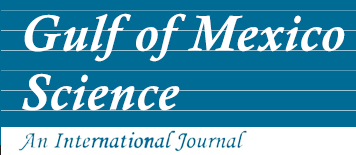Alternate Title
A Survey of Chemical and Biological Structure in Three Florida Bayou-Estuaries
Abstract
Detailed information on the benthic macroinvertebrate community composition is unavailable for most Gulf of Mexico near-coastal areas. In response, structural and functional characteristics of this biota were determined, in conjunction with sediment chemical quality and acute toxicity, for three urbanized bayous. Sediment chemical contamination in the bayous was common. Numerical sediment quality assessment guidelines were exceeded at 13 of the 16 sampling stations for as many as six analytes. However, the results of whole sediment toxicity tests conducted with the benthic invertebrates Mysidopsis bahia (epifaunal) and Ampelisca abdita (infaunal) indicated that 14 of the 16 sediments were not acutely toxic. The benthic macroinvertebrate composition was indicative of that for organically enriched sediments, and the quality was spatially distinct and sometimes increased seaward. The percent of the fauna indicative of organic enrichment ranged from 14 to 100% for the 16 sampling stations. Pollution-tolerant infaunal species such as the polychaetous annelids Streblospio benedicti and Mediomastus ambiseta were dominant. The Shannon-Wiener diversity index values ranged from 1.0 to 3.8. The quality of the macroinvertebrate communities paralleled the results for sediment chemical quality and particle size distribution more so than those for acute toxicity. It was obvious that an integrated chemical and biological assessment was needed to characterize the environmental condition of the sediments in these urbanized coastal habitats.
Recommended Citation
Butts, G. L. and M. A. Lewis.
2002.
A Survey of Chemical and Biological Structure in Three Florida Bayou-Estuaries.
Gulf of Mexico Science
20
(1).
Retrieved from https://aquila.usm.edu/goms/vol20/iss1/1

